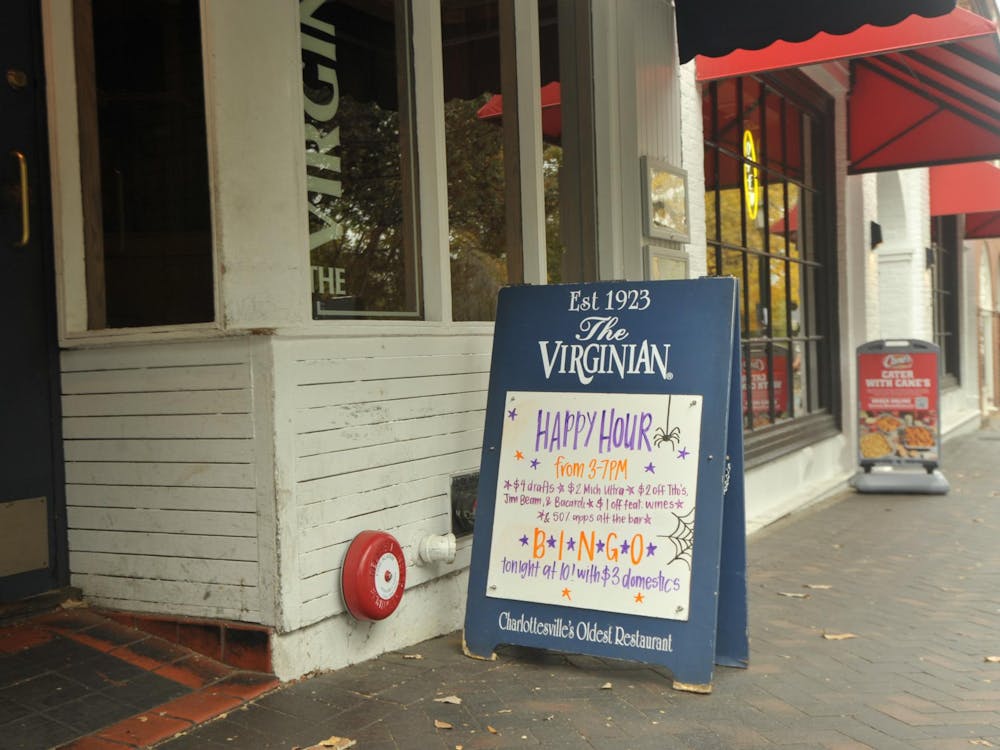Those familiar with the University know that many students come from wealth.What might strike some as odd, though, is the contemporary decline in lower-income students. Over the past decade, the percentage of lower-income students attending the University has dropped three percent, from 11 percent to eight.
While the University does not keep statistics concerning the graduation and retention rates of lower-income students -- those coming from families generally earning less then $40,000 a year -- a U.S. Department of Education report last year found that lower-income students are significantly less likely to graduate than higher-income students within 5 years.
The University is aware of the challenges lower-income students face in financing their education, as evidenced by its repeated commitments to Access U.Va., a comprehensive financial aid program designed to make the University more accessible and decrease student indebtedness. Still, some suggest the problem cannot be entirely solved in dollars-and-cents terms.
One of the major problems with targeting lower-income students as prospective students is that it's difficult to know what exactly is preventing many of them from applying to and attending the University.
Carmen Comsti, a lower-income fourth-year College student, said she believes students who attend less affluent high schools may be less likely to apply.
"If an applicant came from a lower-income [area] with a less-than-adequate high school system, they would have to compete with applicants from places like Northern Virginia, which has some of the best high schools in the country," Comsti said.
In an attempt to reduce the disadvantages lower-income students face, the University recently has changed from a "need blind" policy to a "need conscious" one, Dean of Admissions John Blackburn said in an earlier interview with The Cavalier Daily. The new policy means admissions officials request information on a student's economic status from the financial aid office to help in deciding admission, much in the same way they consider race and ethnicity or legacy status.
Despite the need-conscious policy, it is often difficult for admissions officials to know a person's economic status because financial information does not appear on the actual application and is instead filed separately with the financial aid office.
But even more than a complicated admissions process, some argue that lower-income students often are turned off by the University long before application time.
The University has a reputation for being a school composed of wealthy students. According to a September 2004 article in USA Today, 58 percent of students at the University came from families with incomes over $100,000, and 20 percent from families with incomes of $200,000 or more. On the other side of the spectrum, less than five percent of the entering class of 2008 came from families with incomes 150 percent above the federal poverty line or less.
According to Comsti, lower-income students might feel they just don't fit in.
"When [lower-income] students visit the University, they may eventually drop out because they cannot relate to many other students because they come from a different social and cultural background because of their economic status," she said.
The University's reputation as a school for wealthy students is not a recent phenomenon. Over 80 years ago, in the 1922 Annual Report to the President, the Medical School requested money to fund a survey intended to disprove the statement that the "University of Virginia is a rich man's school."
The trend of associating the University with wealth appears to have continued well into the 1950s, according to Board of Visitors Secretary Alexander "Sandy" Gilliam. A 1955 College graduate and University employee for the past 30 years, Gilliam said many people used to believe that the majority of University students had attended expensive, prestigious high schools.
The numbers, though, tell a different story.
"I asked [the Institutional Analysis department] and they pulled up figures going back to 1910," Gilliam said. "The percentage of students from public high schools has always been in the overwhelming majority. I think there's the perception that the majority of students are from expensive boarding schools, but that's simply not the case."
Politics Prof. Larry J. Sabato similarly attended the University as an undergraduate. But Sabato said that when he attended in the 1970s, the numbers of from very wealthy families were decreasing.
"I certainly was from the middle, middle class, if that," Sabato said. "Inevitably U.Va. had a certain elitism--the very wealthy who came from blue blood families. But their influence had declined by the time I got here."
Although the wealth of students is not as great as it once was, Sabato did not completely exclude it as a factor in the attendance decisions of lower-income students.
"You tend to have students who come here generation after generation," he said. "It's partly a strength--it shows a real commitment from certain families to the University, but may also decrease the percentage of low-income [students] who matriculate."
Although she was not deterred from applying to the University by its reputation, Comsti said she feels her situation sometimes makes it difficult for her to identify with other students socially.
"The fact that some students assume that everyone else has as much expendable finances as they do bothers me," she said.
Fourth-year Engineering student Kevin Wu said he was sympathetic to those kinds of concerns, adding that one's available expendable income often determines what activities they may take part in at college.
"I could see there being problems with that," he said. "The Greek scene is very big and you have to pay dues to be a part of that."
President John T. Casteen III, who received three degrees from the University in the 1960s, said that he does not buy into a kind of higher-income deterrence theory, however.
"The notion that the University is largely for wealthy students is a myth that has never been altogether true," Casteen said. "When I was a student, it was heavily male and white, but in other ways it reflected the state's economic diversity. First-generation college students were commonplace. Many of us borrowed and worked to go to school."
Having come from modest beginnings himself






